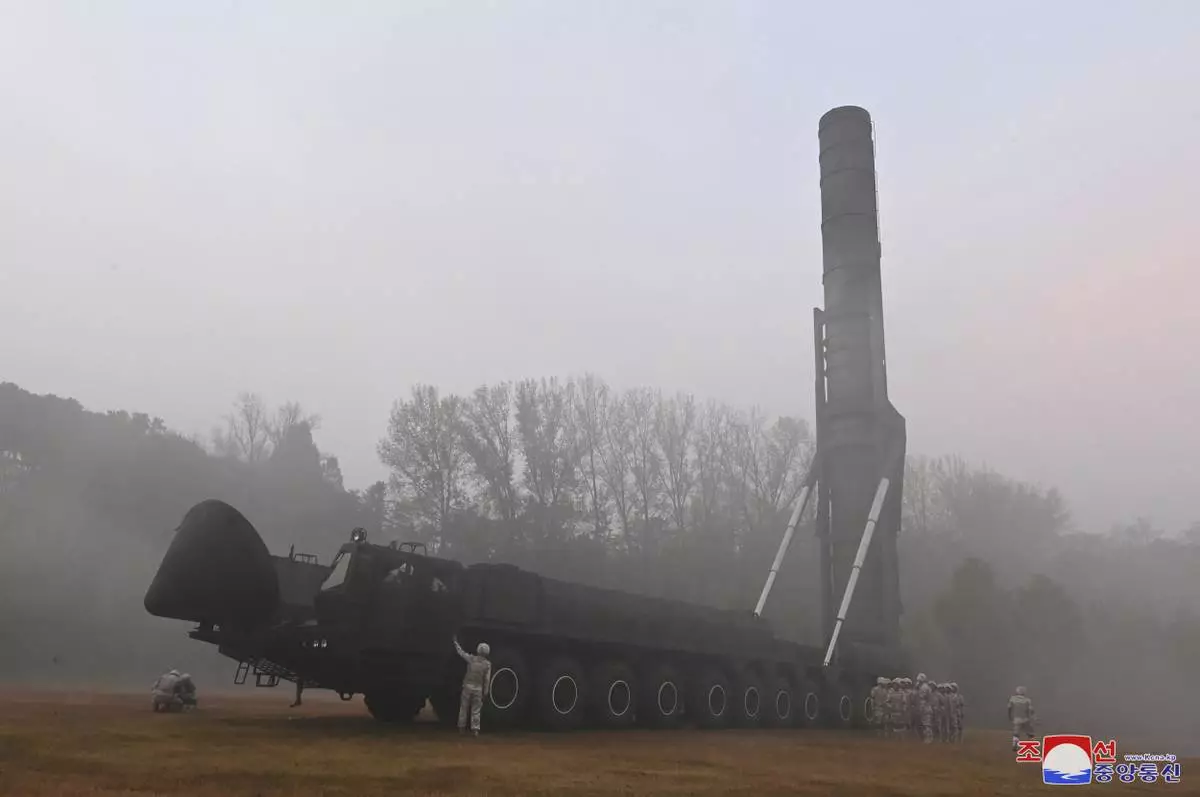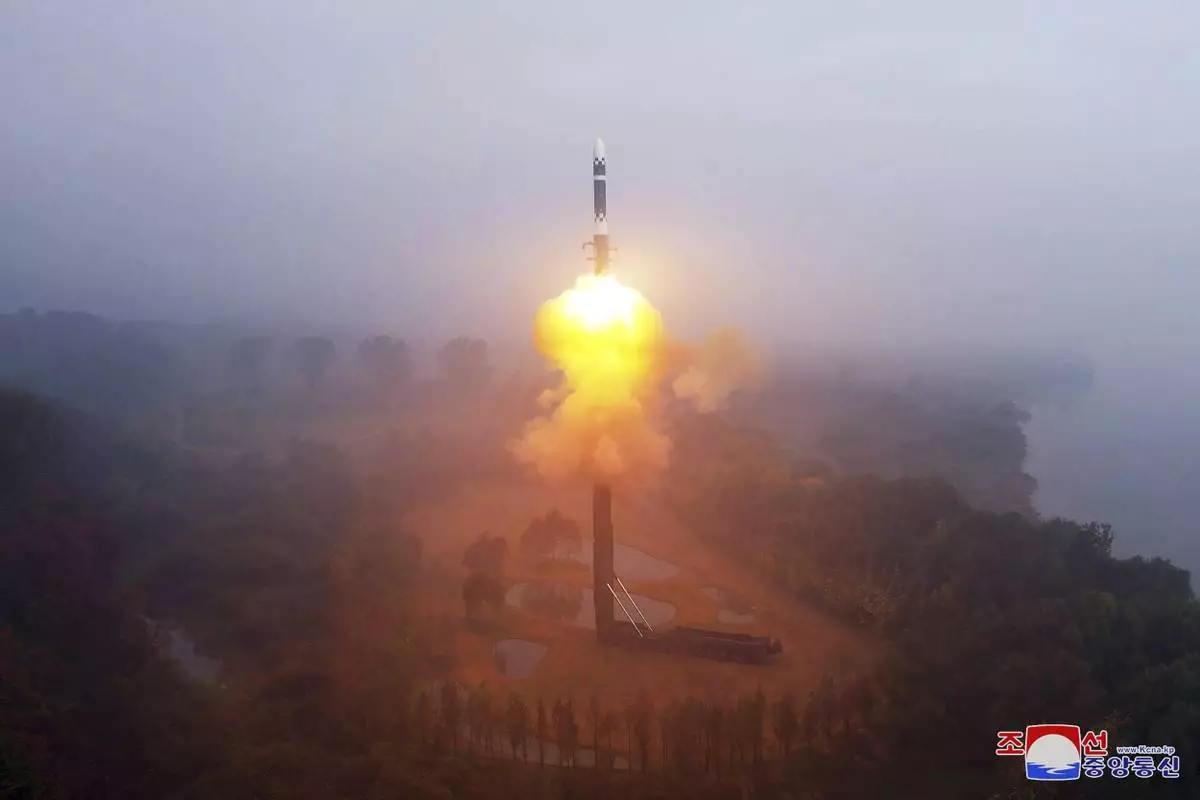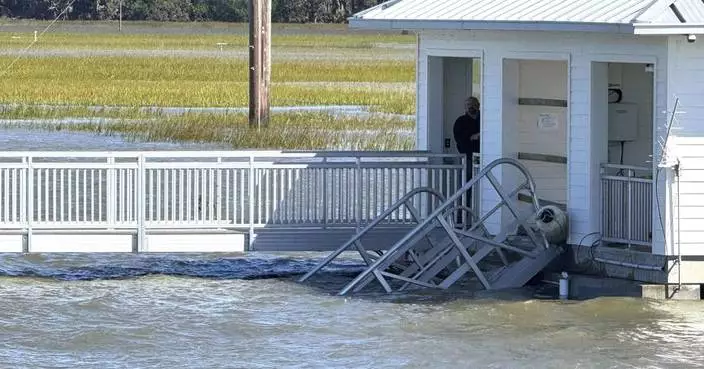VENTURA, Calif. (AP) — A judge decided Wednesday that a Southern California college professor will stand trial for involuntary manslaughter and battery in the death of a Jewish counter-protester during demonstrations over the Israel-Hamas war last year.
Superior Court Judge Ryan Wright judge declared after a two-day preliminary hearing that there's enough evidence to try Loay Abdelfattah Alnaji, according to the Ventura County District Attorney's Office.
Alnaji, 51, is accused of striking Paul Kessler with a megaphone in November during a confrontation at an event that started as a pro-Palestinian demonstration in Thousand Oaks, a suburb northwest of Los Angeles.
Kessler, 69, fell backward and struck his head on the pavement. He died the next day at a hospital.
Alnaji was charged with two felonies: involuntary manslaughter and battery causing serious bodily injury, with special allegations of personally inflicting great bodily harm injury on each count, the DA's office said. If found guilty of all charges, he could be sentenced to more than four years in prison.
Alnaji posted $50,000 bail. An email and phone message for Alnaji’s lawyer, Ron Bamieh, weren't immediately returned Wednesday.
Alnaji, a professor of computer science at Moorpark College, had espoused pro-Palestinian views on his Facebook page and other social media accounts, many of which were taken down in the days after Kessler's death, according to the Los Angeles Times.

FILE - Attorney Ron Bamieh, left, listens to his client, Loay Abdelfattah Alnaji, a professor of computer science at Moorpark College, in Ventura County Superior Court on Nov. 17, 2023, in Ventura, Calif. A judge decided Wednesday, May 15, that Alnaji will stand trial for involuntary manslaughter and battery in the death of a Jewish counter-protester during demonstrations over the Israel-Hamas war last year. (AP Photo/Damian Dovarganes, File)
SEOUL, South Korea (AP) — North Korea on Friday bragged of its recently tested new intercontinental ballistic missile, calling it “the world’s strongest,” a claim viewed by outside experts as propaganda though the test showed an advancement in the North's quest to build a more reliable weapons arsenal.
A missile launched by North Korea on Thursday flew higher and stayed in the air for a longer duration than any other weapon the country had so far fired. It signaled that the North has achieved progress in acquiring a nuclear-armed ICBM that can hit the U.S. mainland. But foreign experts assess that the country has still a few remaining technological issues to master before acquiring such a functioning ICBM.
On Friday, the North’s Korean Central News Agency identified the missile as “Hwasong-19” ICBM and called it “the world’s strongest strategic missile” and “the perfected weapon system.”
KCNA said leader Kim Jong Un observed the launch, describing it as “an appropriate military action” to express North Korea’s resolve to respond to its enemies’ moves that escalated tensions and threats to North Korea’s national security. It said Kim thanked weapons scientists for demonstrating North Korea’s “matchless strategic nuclear attack capability.”
South Korea’s military earlier said that North Korea could have tested a solid-fueled missile but Friday’s KCNA dispatch didn’t say what propellant the Hwasong-19 ICBM uses. Observers say the color of exhaust flames seen in North Korean media photos on the launch still suggest the new ICBM uses solid fuels.
Before Thursday’s test, North Korea’s most advanced ICBM was known as the “Hwasong-18” missile which uses solid fuels. Pre-loaded solid propellants make it easier to move missiles and require much less launch preparation times than liquid propellants that must be fueled before liftoffs. So it’s more difficult for opponents to detect launches by solid-fuel missiles.
In recent years, North Korea has reported steady advancement in its efforts to obtain nuclear-tipped missiles. Many foreign experts believe North Korea likely has missiles that can deliver nuclear strikes on all of South Korea, but it has yet to possess nuclear missiles that can travel to the mainland U.S.
There are questions on whether North Korea has acquired the technology to shield warheads from the high-temperature, high-stress environment of atmospheric reentry. Many foreign analysts say North Korea also must have improved altitude control and guidance systems for missiles. They say North Korea needs an ability to place multiple warheads on a single missile to defeat its rivals’ missile defenses.
All of North Korea’s known ICBM tests, including Thursday’s, have been performed on steep angles to avoid neighboring countries. South Korean military spokesperson Lee Sung Joon said Thursday that a high-angel trajectory launch cannot verify a missile’s re-entry vehicle technology, though North Korea has previously claimed to have acquired that technology.
Observers say that Thursday's launch, the North's first ICBM test in almost a year, was largely meant to grab American attention days before the U.S. presidential election and respond to international condemnation over North Korea's reported dispatch of troops to Russia to support its war against Ukraine.
North Korea's reported troop dispatch highlights the expanding military cooperation between North Korea and Russia. South Korea. the U.S. and others worry North Korea might seek high-tech, sensitive Russian technology to perfect its nuclear and missile programs in return for joining the Russian-Ukraine war.
__
Associated Press writer Kim Tong-hyung contributed to this report.

This photo provided by the North Korean government, shows what it says a test launch of new intercontinental ballistic missile "Hwasong-19" at an undisclosed place in North Korea Thursday, Oct. 31, 2024. Independent journalists were not given access to cover the event depicted in this image distributed by the North Korean government. The content of this image is as provided and cannot be independently verified. Korean language watermark on image as provided by source reads: "KCNA" which is the abbreviation for Korean Central News Agency. (Korean Central News Agency/Korea News Service via AP)

This photo provided by the North Korean government, shows what it says a test launch of new intercontinental ballistic missile "Hwasong-19" at an undisclosed place in North Korea Thursday, Oct. 31, 2024. Independent journalists were not given access to cover the event depicted in this image distributed by the North Korean government. The content of this image is as provided and cannot be independently verified. Korean language watermark on image as provided by source reads: "KCNA" which is the abbreviation for Korean Central News Agency. (Korean Central News Agency/Korea News Service via AP)

This photo provided by the North Korean government, shows what it says a test launch of new intercontinental ballistic missile "Hwasong-19" at an undisclosed place in North Korea Thursday, Oct. 31, 2024. Independent journalists were not given access to cover the event depicted in this image distributed by the North Korean government. The content of this image is as provided and cannot be independently verified. Korean language watermark on image as provided by source reads: "KCNA" which is the abbreviation for Korean Central News Agency. (Korean Central News Agency/Korea News Service via AP)













